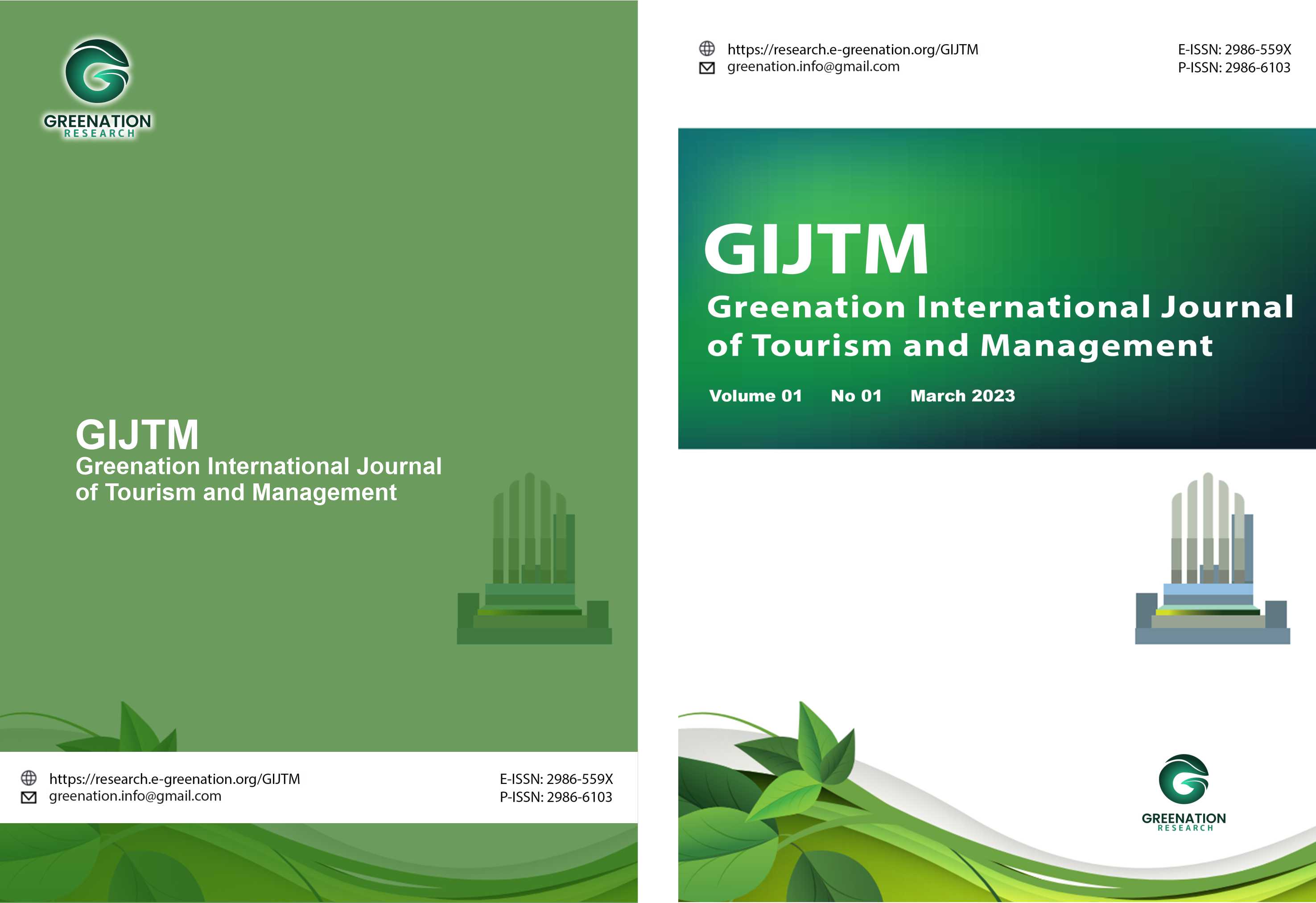Enhancing Teachers' Innovative Behavior: The Interaction Between Knowledge Sharing And Creative Work Climate
DOI:
https://doi.org/10.38035/gijtm.v3i2.437Keywords:
Teachers' Innovative Behavior, Knowledge Sharing, Creative Work Climate, Professional Development, EducatorsAbstract
This study investigates the impact of knowledge sharing and a creative work climate on teachers' innovative behavior in Cirebon, Indonesia. Using a quantitative approach through survey methods, data were collected from 122 teachers selected using Stratified Random Sampling to ensure accurate sample representation. The results show that knowledge sharing is the strongest predictor of teachers' innovative behavior, indicating that teachers who actively exchange ideas and teaching strategies are more likely to adopt innovative teaching methods. Additionally, the creative work climate also positively influences teacher innovation, although the effect is moderate, suggesting the presence of other contextual factors. These findings highlight the urgency of building a collaborative and supportive school environment for creativity to enhance teachers' innovation capacity. The practical implications of this research are expected to serve as a guide for policymakers and school administrators in designing strategies that encourage a culture of knowledge sharing and creativity-based professional development among educators.
References
Aboramadan, M. (2021). Servant leadership and followers’ creativity: does climate for creativity matter? Evidence-Based HRM, 9(1). https://doi.org/10.1108/EBHRM-01-2020-0012
Afsar, B., Badir, Y., & Saeed, B. (2014). Transformational leadership and innovative work behavior. Industrial Management and Data Systems, 114(8). https://doi.org/10.1108/IMDS-05-2014-0152
Alajmi, B. M., & Al-Qallaf, C. L. (2022). Fostering knowledge-sharing behavior through social capital: the implications of face-to-face and online interactions. Global Knowledge, Memory and Communication, 71(4–5). https://doi.org/10.1108/GKMC-01-2021-0007
Amabile, T. M. (2012). Componential Theory of Creativity.
Bantha, T., & Nayak, U. (2020). The relation of workplace spirituality with employees’ innovative work behaviour: the mediating role of psychological empowerment. Journal of Indian Business Research, 13(2). https://doi.org/10.1108/JIBR-03-2020-0067
Cheng, S. T., Fung, H. H., & Chan, A. C. M. (2009). Self-Perception and Psychological Well-Being: The Benefits of Foreseeing a Worse Future. Psychology and Aging, 24(3). https://doi.org/10.1037/a0016410
Crossan, M. M. (1996). The Knowledge-Creating Company: How Japanese Companies Create the Dynamics of Innovation. Journal of International Business Studies, 27(1). https://doi.org/10.1057/jibs.1996.13
De Vries, R. E., Van Den Hooff, B., & De Ridder, J. A. (2006). Explaining knowledge sharing: The role of team communication styles, job satisfaction, and performance beliefs. Communication Research, 33(2). https://doi.org/10.1177/0093650205285366
Dixit, A., & Upadhyay, Y. (2021). Role of JD-R model in upticking innovative work behaviour among higher education faculty. RAUSP Management Journal, 56(2). https://doi.org/10.1108/RAUSP-03-2020-0060
Douglas, S. P., & Craig, C. S. (2007). Collaborative and iterative translation: An alternative approach to back translation. In Journal of International Marketing (Vol. 15, Issue 1). https://doi.org/10.1509/jimk.15.1.030
Elidemir, S. N., Ozturen, A., & Bayighomog, S. W. (2020). Innovative behaviors, employee creativity, and sustainable competitive advantage: A moderated mediation. Sustainability (Switzerland), 12(8). https://doi.org/10.3390/SU12083295
Fornell, C., & Larcker, D. F. (1981). Structural Equation Models with Unobservable Variables and Measurement Error: Algebra and Statistics. Journal of Marketing Research, 18(3). https://doi.org/10.1177/002224378101800313
Hair, J. F., Risher, J. J., Sarstedt, M., & Ringle, C. M. (2019). When to use and how to report the results of PLS-SEM. In European Business Review (Vol. 31, Issue 1). https://doi.org/10.1108/EBR-11-2018-0203
Hansen, J. A., & Pihl-Thingvad, S. (2019). Managing employee innovative behaviour through transformational and transactional leadership styles. Public Management Review, 21(6). https://doi.org/10.1080/14719037.2018.1544272
Hassi, A. (2019). Empowering leadership and management innovation in the hospitality industry context: The mediating role of climate for creativity. International Journal of Contemporary Hospitality Management, 31(4). https://doi.org/10.1108/IJCHM-01-2018-0003
Henseler, J., Ringle, C. M., & Sarstedt, M. (2015). A new criterion for assessing discriminant validity in variance-based structural equation modeling. Journal of the Academy of Marketing Science, 43(1). https://doi.org/10.1007/s11747-014-0403-8
Isaksen, S. G., & Ekvall, G. (2010). Managing for innovation: The two faces of tension in creative climates. Creativity and Innovation Management, 19(2). https://doi.org/10.1111/j.1467-8691.2010.00558.x
Islam, M. A., Mendy, J., Haque, A. K. M. A., & Rahman, M. (2022). Green human resource management practices and millennial employees’ retention in small and medium enterprises: The moderating impact of creativity climate from a developing country perspective. Business Strategy and Development, 5(4). https://doi.org/10.1002/bsd2.202
Jun, K., & Lee, J. (2023). Transformational Leadership and Followers’ Innovative Behavior: Roles of Commitment to Change and Organizational Support for Creativity. Behavioral Sciences, 13(4). https://doi.org/10.3390/bs13040320
Karatepe, O. M., Aboramadan, M., & Dahleez, K. A. (2020). Does climate for creativity mediate the impact of servant leadership on management innovation and innovative behavior in the hotel industry? International Journal of Contemporary Hospitality Management, 32(8). https://doi.org/10.1108/IJCHM-03-2020-0219
Knol, J., & Van Linge, R. (2009). Innovative behaviour: The effect of structural and psychological empowerment on nurses. Journal of Advanced Nursing, 65(2). https://doi.org/10.1111/j.1365-2648.2008.04876.x
Kuril, S., Maun, D., & Chand, V. S. (2023). Measuring teacher innovative behavior: a validated multidimensional inventory for use with public school teachers. International Journal of Educational Management, 37(2). https://doi.org/10.1108/IJEM-03-2022-0095
Munir, R., & Beh, L. S. (2019). Measuring and enhancing organisational creative climate, knowledge sharing, and innovative work behavior in startups development. Bottom Line, 32(4). https://doi.org/10.1108/BL-03-2019-0076
Nguyen, P. (2024). Effects of transformational leadership on the learning organization and nurses’ innovative behavior in Vietnamese public hospitals. International Journal of Public Leadership. https://doi.org/10.1108/IJPL-04-2024-0035
Nonaka, I., & Takeuchi, H. (1996). The knowledge-creating company: How Japanese companies create the dynamics of innovation. Long Range Planning, 29(4). https://doi.org/10.1016/0024-6301(96)81509-3
Parhamnia, F., Farahian, M., & Rajabi, Y. (2022). Knowledge sharing and self-efficacy in an EFL context: the mediating effect of creativity. Global Knowledge, Memory and Communication, 71(4–5). https://doi.org/10.1108/GKMC-03-2021-0040
Podsakoff, P. M., MacKenzie, S. B., Lee, J. Y., & Podsakoff, N. P. (2003). Common Method Biases in Behavioral Research: A Critical Review of the Literature and Recommended Remedies. In Journal of Applied Psychology (Vol. 88, Issue 5). https://doi.org/10.1037/0021-9010.88.5.879
Purc, E., & Lagun, M. (2019). Personal values and innovative behavior of employees. Frontiers in Psychology, 10(APR). https://doi.org/10.3389/fpsyg.2019.00865
Ringle, C. M., Wende, S., & Becker, J.-M. (2015). SmartPLS 3. Bönningstedt: SmartPLS. Retrieved From.
Salam, S., & Senin, A. A. (2022). A Bibliometric Study on Innovative Behavior Literature (1961–2019). Sage Open, 12(3). https://doi.org/10.1177/21582440221109589
Scott, S. G., & Bruce, R. A. (1994). Determinants of Innovative Behavior: A Path Model of Individual Innovation in the Workplace. Academy of Management Journal, 37(3). https://doi.org/10.5465/256701
Shalley, C. E., Zhou, J., & Oldham, G. R. (2004). The effects of personal and contextual characteristics on creativity: Where should we go from here? Journal of Management, 30(6). https://doi.org/10.1016/j.jm.2004.06.007
Singh, M., & Sarkar, A. (2019). Role of psychological empowerment in the relationship between structural empowerment and innovative behavior. Management Research Review, 42(4). https://doi.org/10.1108/MRR-04-2018-0158
Slåtten, T., Svensson, G., & Sværi, S. (2011). Empowering leadership and the influence of a humorous work climate on service employees’ creativity and innovative behaviour in frontline service jobs. International Journal of Quality and Service Sciences, 3(3). https://doi.org/10.1108/17566691111182834
Stanikzai, M. I. (2023). Critical Thinking, Collaboration, Creativity and Communication Skills among School Students: A Review Paper. European Journal of Theoretical and Applied Sciences, 1(5). https://doi.org/10.59324/ejtas.2023.1(5).34
Tripathi, N., & Ghosh, V. (2020). Deep-level diversity and workgroup creativity: the role of creativity climate. Journal of Indian Business Research, 12(4). https://doi.org/10.1108/JIBR-01-2019-0007
Vandavasi, R. K. K., McConville, D. C., Uen, J. F., & Yepuru, P. (2020). Knowledge sharing, shared leadership and innovative behaviour: a cross-level analysis. International Journal of Manpower, 41(8). https://doi.org/10.1108/IJM-04-2019-0180
Zeinabadi, H. (2022). Principals’ role in teachers’ knowledge-sharing beliefs, intention and behaviour in Iranian schools: exploring the impact of knowledge-sharing leadership. Journal of Educational
Downloads
Published
How to Cite
Issue
Section
License
Copyright (c) 2025 Cindy Fiona Alyaza, Syifa Nurul Fauziah

This work is licensed under a Creative Commons Attribution 4.0 International License.
Copyright :
Authors who publish their manuscripts in this journal agree to the following conditions:
- Copyright in each article belongs to the author.
- The author acknowledges that the Greenation International Journal of Tourism and Management (GIJTM) has the right to be the first to publish under a Creative Commons Attribution 4.0 International license (Attribution 4.0 International CC BY 4.0).
- Authors can submit articles separately, arrange the non-exclusive distribution of manuscripts that have been published in this journal to other versions (for example, sent to the author's institutional repository, publication in a book, etc.), by acknowledging that the manuscript has been published for the first time at GIJTM.


























